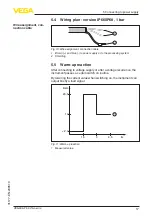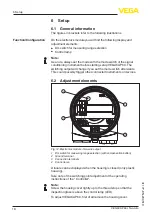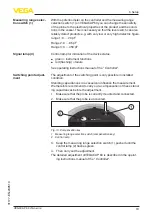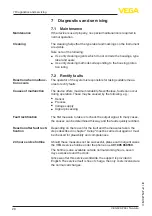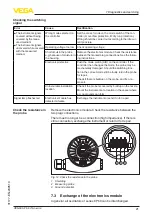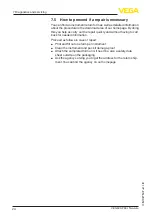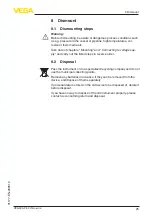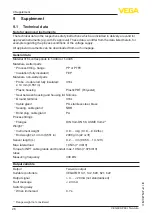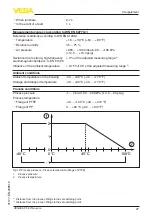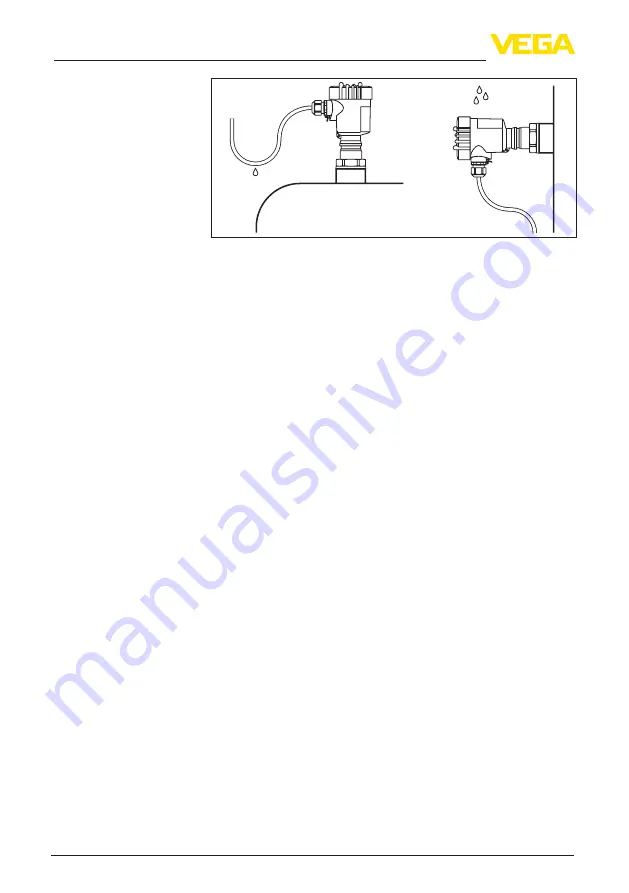
12
4 Mounting
VEGACAP 69 • Two-wire
31177-EN-230510
Fig. 4: Measures against moisture ingress
Do not hold VEGACAP 69 on the probe. Especially with heavy flange
versions or long rod versions, the sensor can be damaged simply by
the weight of the instrument.
The process fitting must be sealed if there is gauge or low pressure
in the vessel. Before use, check if the sealing material is resistant
against the measured product and the process temperature.
The max. permissible pressure is specified in chapter "
Technical
data
" or on the type label of the sensor.
Metric threads
In the case of instrument housings with metric thread, the cable
glands are screwed in at the factory. They are sealed with plastic
plugs as transport protection.
You have to remove these plugs before electrical connection.
NPT thread
In the case of instrument housings with self-sealing NPT threads, it is
not possible to have the cable entries screwed in at the factory. The
free openings for the cable glands are therefore covered with red dust
protection caps as transport protection.
Prior to setup you have to replace these protective caps with ap-
proved cable glands or close the openings with suitable blind plugs.
4.2 Mounting instructions
Due to the effects of agitators, equipment vibration or similar, the level
switch can be subjected to strong lateral forces. For this reason, do
not use an overly long electrode for VEGACAP 69, but check if you
can mount a short level switch on the side of the vessel in horizontal
position.
Extreme vibration caused by the system, e.g. due to agitators or
turbulence in the vessel from fluidisation, can cause the probe of
VEGACAP 69 to vibrate in resonance. If a longer rod version is neces-
sary, you can secure the probe by fastening a suitable brace or guy
directly above the end of the rod.
Transport
Pressure/Vacuum
Cable entries - NPT
thread
Cable glands
Agitators and fluidization

















